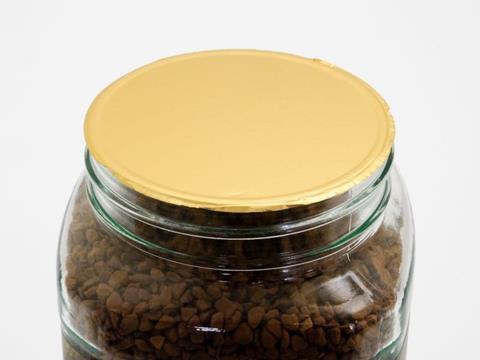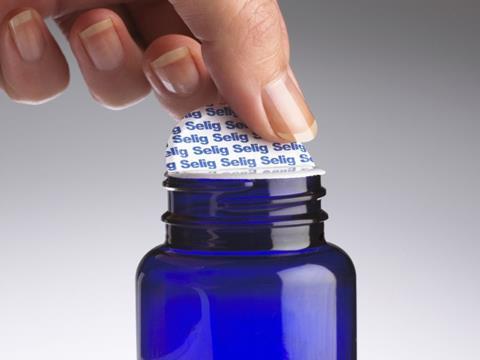
Induction sealing is a method of hermetically sealing containers to maintain product freshness, extend shelf life and provide visible tamper evidence. Peter Tindale, European Sales Director at Selig describes the lining materials and how the process variables of pressure, heat and time are critical to the success of induction heat sealing.
Cases of malicious food and beverage packaging tampering may be rare but the risk, however slight, is clearly to be taken very seriously at every stage in the supply chain. Consumers and retailers alike expect the highest levels of security for their food and drink products, from the point of processing and preparation, through delivery to shop and supermarket shelf, all of which places considerable demands on the packaging's ability, not only to seal effectively, but to provide visible evidence of tampering.A commonly accepted approach to providing tamper evidence for rigid packaging, such as jars and bottles, is to use induction heat sealing, which is a non-contact method of applying a laminated structure to the openings of glass or plastic containers. The technique provides a hermetic seal to deliver not just tamper evidence, but also leak prevention, freshness preservation and pilferage/security protection.
Developing a perfect seal, container by container, as they pass along the packaging line involves close control of three process parameters at the induction heating station: pressure, heat and time. The correct pressure must be applied for the liner to have proper contact with the entire container rim. Heat, applied via a magnetic induction process, raises the temperature of the seal’s metallic foil liner, which ultimately creates a bond with the rim.
Timing is crucial for a successful seal. The induction seal liner needs sufficient time under the coil to be heated to the correct temperature for the polymer sealing surface to melt and subsequently bond to the rim of the container. While the conveyor line speed will dictate this timing, it is well to remember that the time required to heat the induction liner will also depend on the size of the container, whether or not it is hot or cold filled, the type of liner chosen and so on. Moreover, achieving a satisfactory bond between the seal and the rim of the container will be determined by the cooling time interval, as the bond can only develop properly upon cooling. This is a critical stage in the process, requiring smooth handling of the containers to avoid any relative movement of the seal before it has fully bonded to the container.

The induction seal equipment must produce sufficient heat around the induction liner to seal effectively for a given conveyor line speed. Measuring the temperature or temperature rise profile of the liner at the seal interfaces is not a practical proposition and it may be more appropriate to engage with induction equipment suppliers at an early stage to run timing and power trials with induction liners and induction heaters – preferably at the supplier’s premises.
As well as maintaining a correct balance between pressure, heat and time, achieving a successful induction seal will also depend on the choice of liner. An induction liner is a highly engineered, laminated structure, available in one- or two-piece options and with different bonding capabilities. When bonded, one-piece liners leave no residual part of the liner bonded to the closure, whereas two-piece liners are initially bonded to the inside of the closure. The two parts of a two-piece liner enclose a bonding layer (usually wax, though polyolefin is also used). The parts separate on heating, one part staying bonded to the closure, the other becoming bonded to the lip of the container.Two-piece, wax bonded liners have a secondary backing board structure ensuring that, once opened, the container can be resealed. These liners are complex laminates comprising sequential layers of pulp board (the secondary reseal liner); wax or polyolefin (the bonding material); a polymer external contamination barrier; a polymer/paper easy-open ‘lift-and-peel’ device; foam (ensuring even pressure during sealing); aluminium (the induction heated foil); a further polymer layer compatible with the container material (protecting the seal from the container contents), and finally a heat seal specific to the container type. A one-piece induction liner is of similar construction but without the wax/polyolefin and pulp board secondary reseal layers.
Clearly, the choice of liner and the induction system engineering are not trivial tasks to be undertaken lightly. There is an excellent case for trialling both liner and induction equipment at customers’ premises; however, obtaining some initial advice from an experienced supplier such as Selig is an important first step that potential users of induction heat sealing are strongly advised to take when considering the installation of such equipment.
More info:











